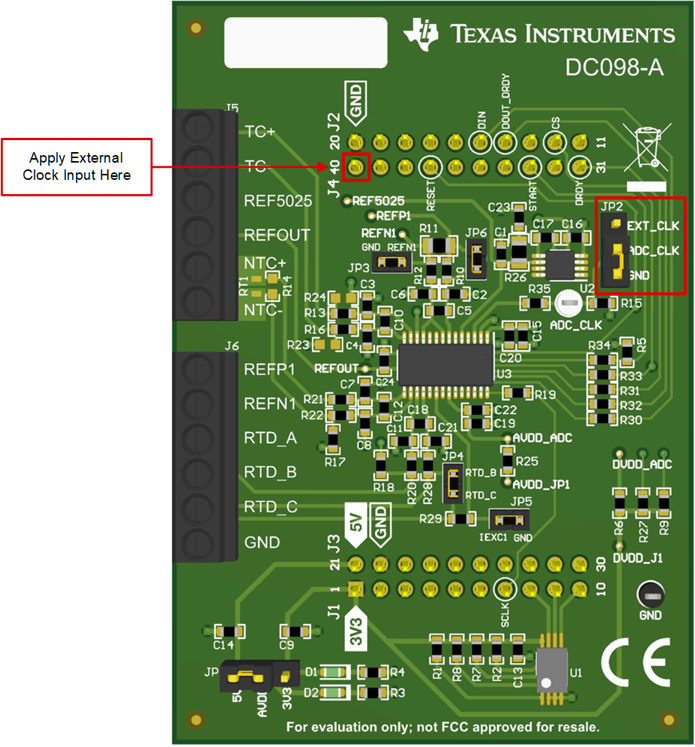SBAU378A September 2021 – January 2022 ADS1148 , ADS1248
- Trademarks
- 1Introduction
- 2Getting Started With the ADS1x48EVM
-
3ADS1x48EVM Overview
- 3.1 Analog and Digital Power Supplies
- 3.2 Voltage Reference Options
- 3.3 Clock Options
- 3.4 Digital Interface
- 3.5
Analog Input Connections
- 3.5.1 Connecting a Thermocouple to J5 on the ADS1x48EVM
- 3.5.2 Connecting a Thermistor to J5 on the ADS1x48EVM
- 3.5.3
Connecting an RTD to J6 on the ADS1x48EVM
- 3.5.3.1 Connecting a 2-Wire RTD Using a Low-Side RREF to J6 on the ADS1x48EVM
- 3.5.3.2 Connecting a 2-Wire RTD Using a High-Side RREF to J6 on the ADS1x48EVM
- 3.5.3.3 Connecting a 3-Wire RTD Using One IDAC and a Low-Side RREF to J6 on the ADS1x48EVM
- 3.5.3.4 Connecting a 3-Wire RTD Using One IDAC and a High-Side RREF to J6 on the ADS1x48EVM
- 3.5.3.5 Connecting a 3-Wire RTD Using Two IDACs and a Low-Side RREF to J6 on the ADS1x48EVM
- 3.5.3.6 Connecting a 3-Wire RTD Using Two IDACs and a High-Side RREF to J6 on the ADS1x48EVM
- 3.5.3.7 Connecting a 4-Wire RTD Using a Low-Side RREF to J6 on the ADS1x48EVM
- 3.5.3.8 Connecting a 4-Wire RTD Using a High-Side RREF to J6 on the ADS1x48EVM
- 3.5.3.9 Summary of ADS1x48EVM RTD Configuration Settings
- 3.5.4 Connecting a General-Purpose Input to J5 on the ADS1x48EVM
- 4ADS1x48EVM GUI
- 5Bill of Materials, Printed Circuit Board Layout, and Schematic
- 6Revision History
3.3 Clock Options
The ADS1x48 integrates a 4.096-MHz clock oscillator to provide the clock signal to the ADC. Additionally, the ADS1x48 offers an external CLK input pin if an external clock signal is required. Choose between these flexible clock options using the JP2 header on the ADS1x48EVM.
Enable the internal oscillator by connecting the shunt to the JP2-3 pin on the JP2 header. This pin is marked GND on the ADS1x48EVM silkscreen. Enable an external clock by connecting the shunt to the JP2-1 pin on the JP2 header. This pin is marked EXT_CLK on the ADS1x48EVM silkscreen. When the external clock option is chosen, provide the external clock signal via the J4-40 pin on the J4 header. This pin and jumper JP2 are highlighted in Figure 3-4.
 Figure 3-4 ADC Clock Options on the ADS1x48EVM
Figure 3-4 ADC Clock Options on the ADS1x48EVM